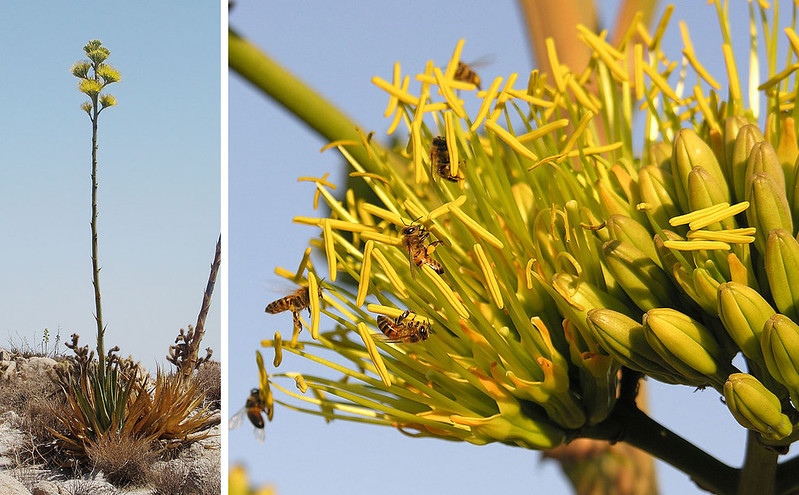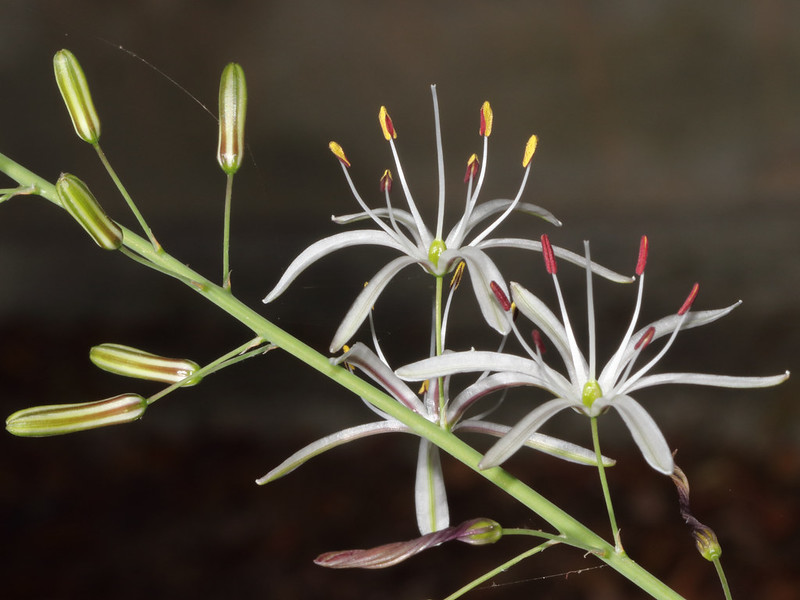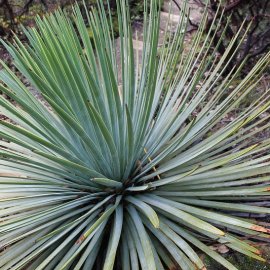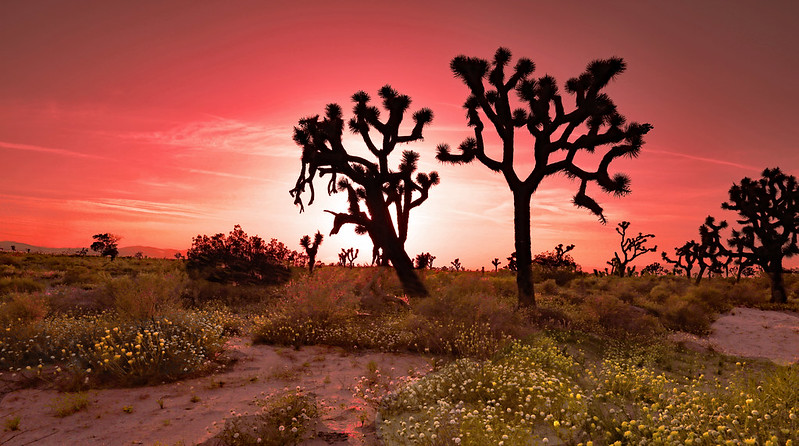Agaves are monocots that are typically rosetted with enormous, tough and fibrous, sword-like leaves. Most shrub and tree form agaves have simple, mostly succulent leaves with teeth on the edges (serrate) and often spine-tipped, and the herb and grasses of the family have flexible, typically thinner leaves. Flowers are often large and bell-shaped or tubular (lily-like), showy, cream-colored, reddish, or yellow, and arranged in panicles that are several feet long.
Agavaceae includes approximately 400 species, largely in the deserts of North, Central, and South America. The most significant genuses in the family are Agave and Yucca: Agave includes 38 species in the United States and about 200 species elsewhere, and Yucca includes 30 species in the United States and over 45 in Mexico and South America.
Interesting Facts
- The only pollinator of Yucca flowers is the yucca moth (Pronuba yuccasella), whose larvae eat the developing seeds.
- Sap from Agave is used to make tequila and mezcal.
- Fibers from leaves of Agaves such as Agave sisalana were used traditionally to make rope and are currently used to make commercial products such as rugs, paper, cloth, and textiles.
Genuses in California
In California there are plants representing eight genuses in the Agavaceae and they are seperated into two groups:
- shrubs or trees with thick, rigid leaves:
- Agave (3 species)
- Hesperoyucca (1 specie)
- Yucca (3 species)
- perennial grasses and herbs with thin flexible leaves:
- Camassia (2 species)
- Chlorogalum (5 species)
- Hasingsia (2 species)
- Hespercallis. (1 species)
- Leucocrinum (1 species)
Common & Iconic Species

_________________________________

_________________________________

_________________________________

_________________________________
Sources:
header photo, photo 2, photo 3, photo 4, photo 5 – from flickr
The Jepson Manual, California Plant Families West of the Sierran Crest and Deserts, Botany in a Day, http://southwestdesertflora.com/
